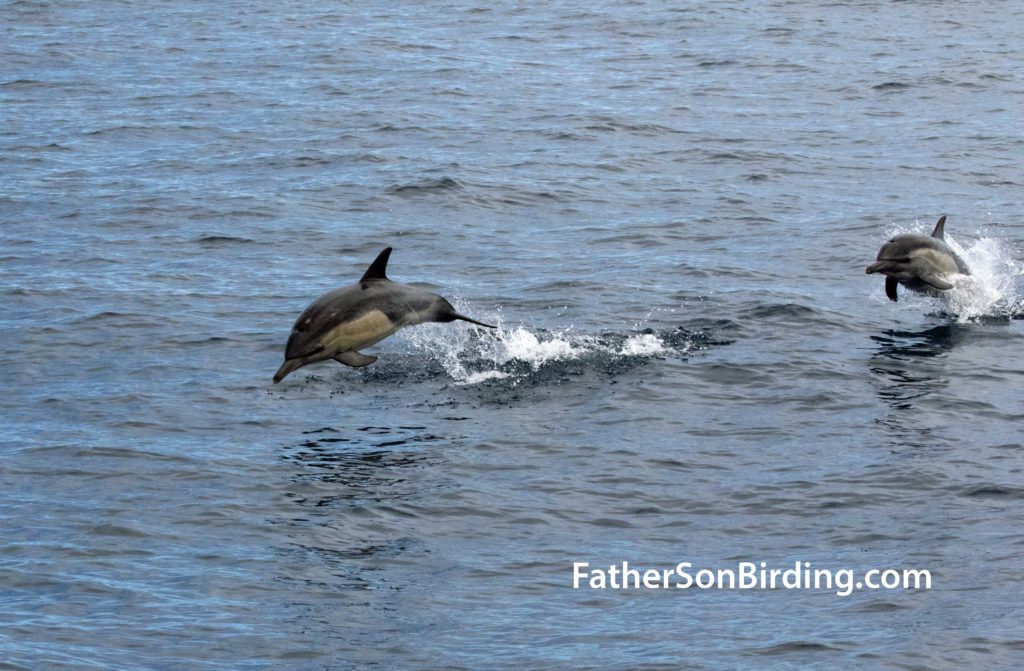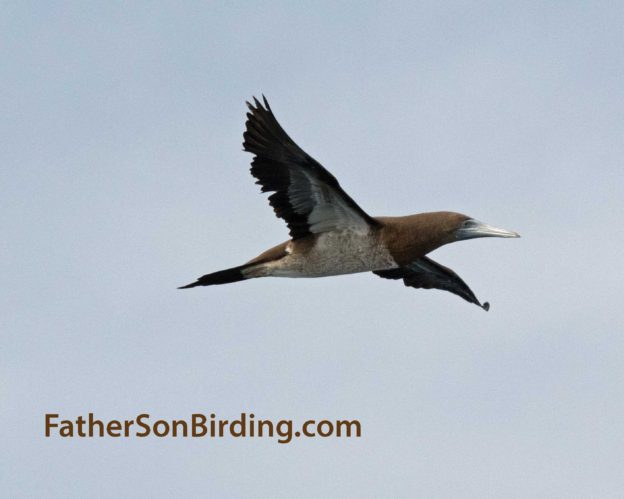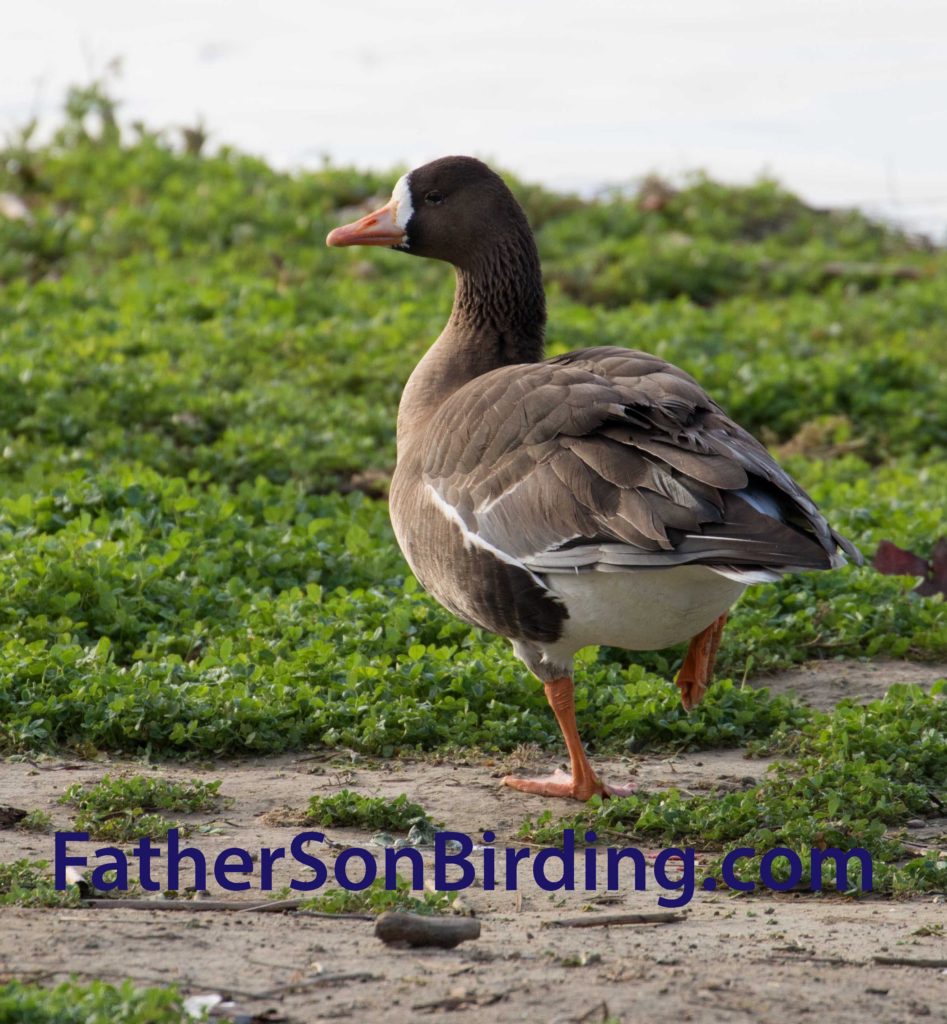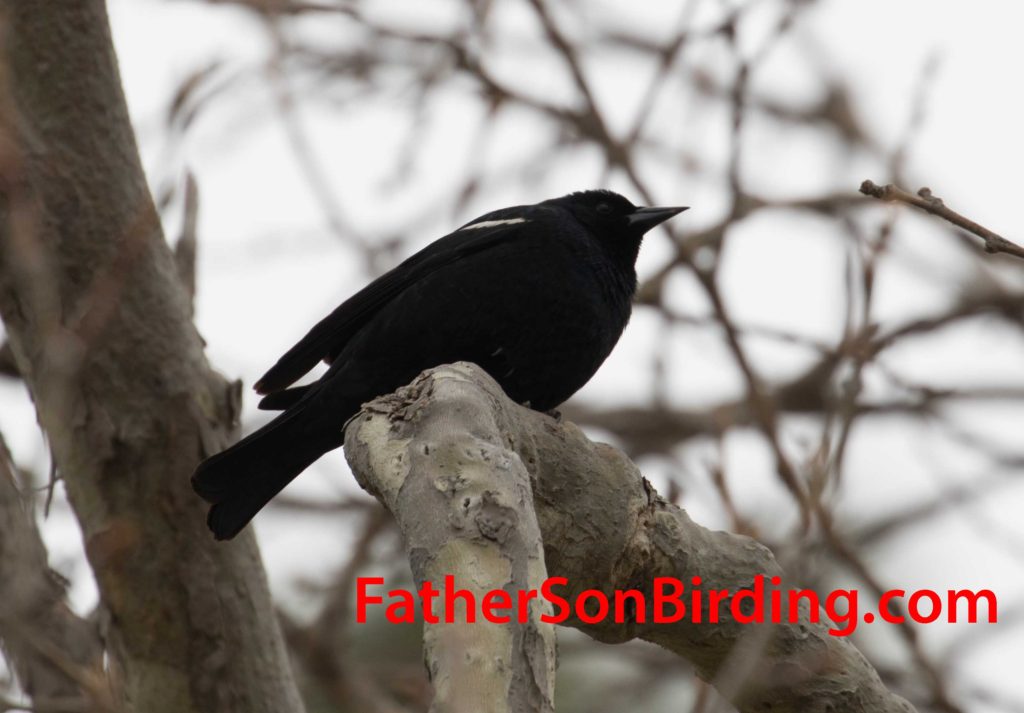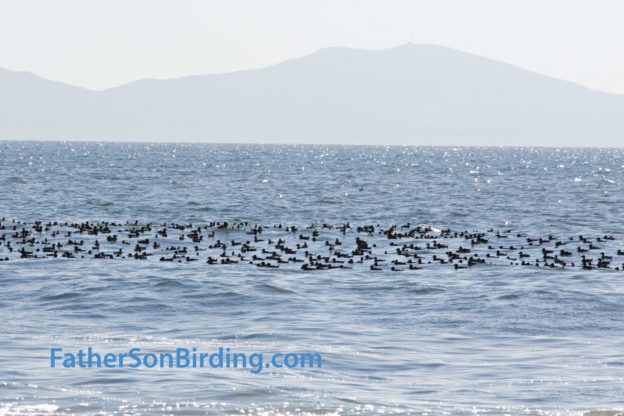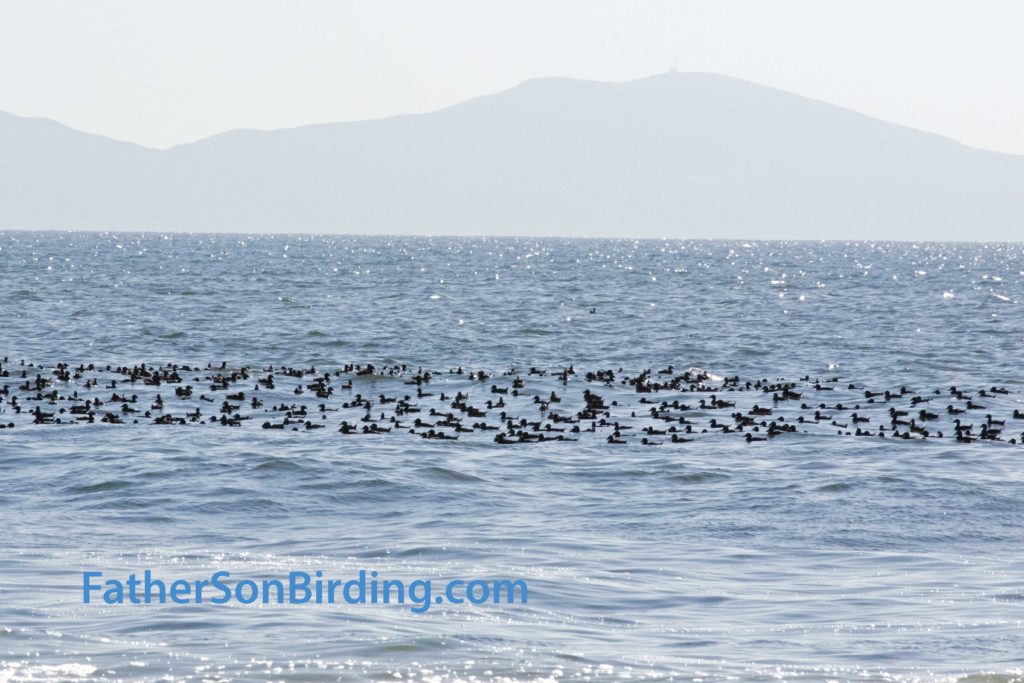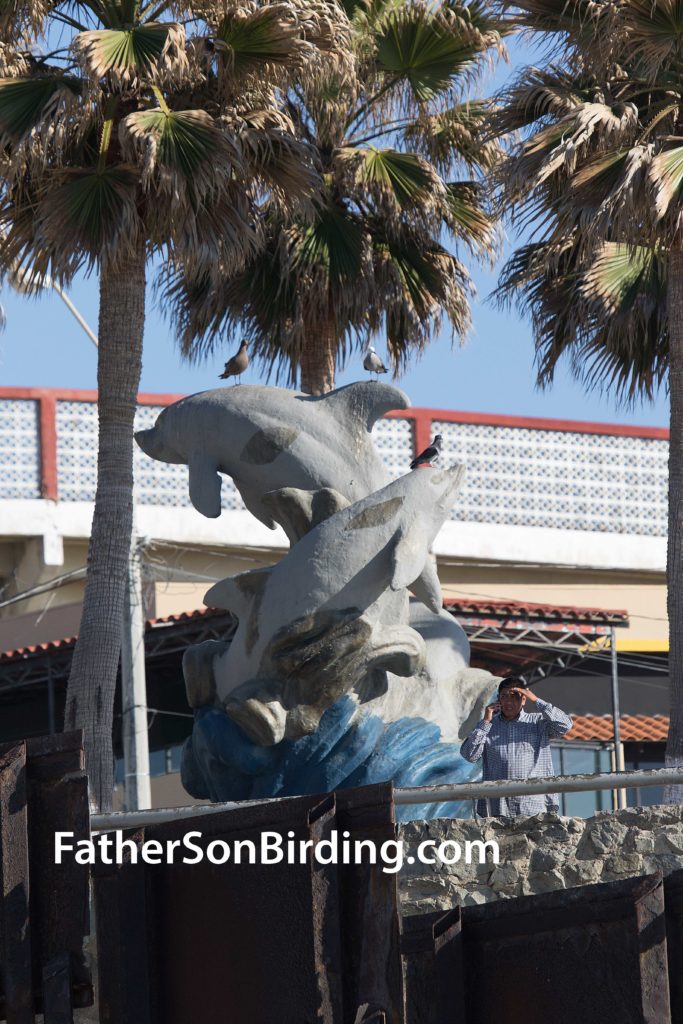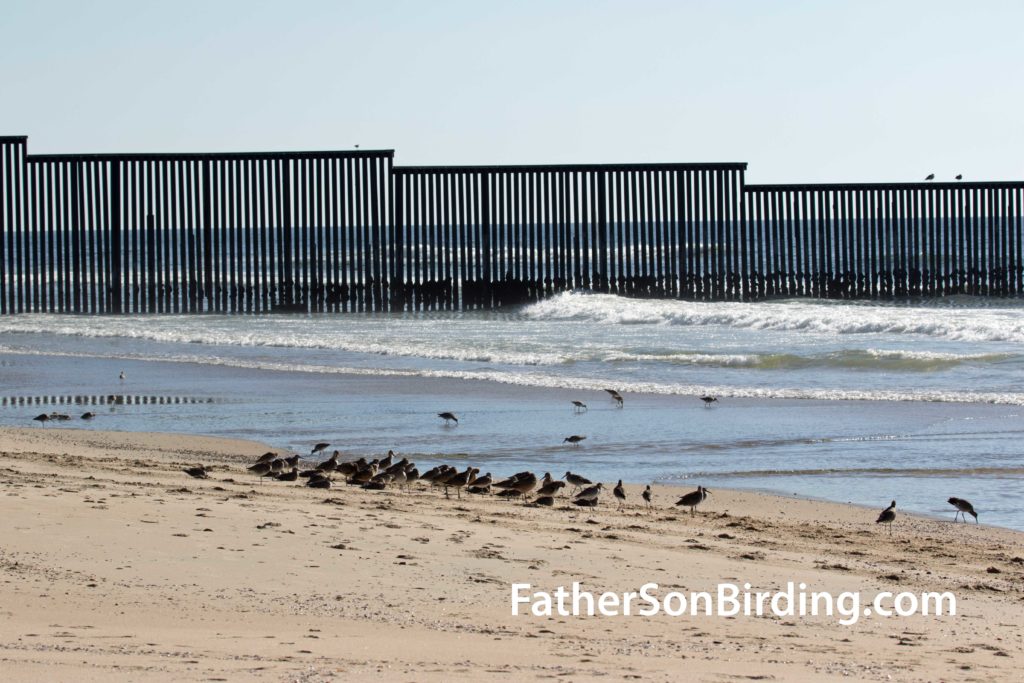Well, it looks like we have solved our Russian hacker problems but we’re still missing half of our subscriber list. You can help by sharing this with your birding friends and urging them to resubscribe. If you have a problem doing this, please let us know at collard@bigsky.net and I’ll subscribe you. We thank you, birder to birder!
Our last day of the San Diego Bird Festival took us away from shore on the mighty birding (and perhaps fishing) vessel New Seaforth. This would be Braden’s and my third California pelagic birding cruise and in many ways it proved the most memorable. Almost immediately upon leaving the safety of Mission Bay, we began seeing dozens of Black-vented Shearwaters heading north and, of course, we followed them. They led us to a massive fish feast, where from 5-10,000 shearwaters gorged themselves on acres of anchovies. At least a thousand gulls, countless cormorants, and sea lions and common dolphins joined the fray.
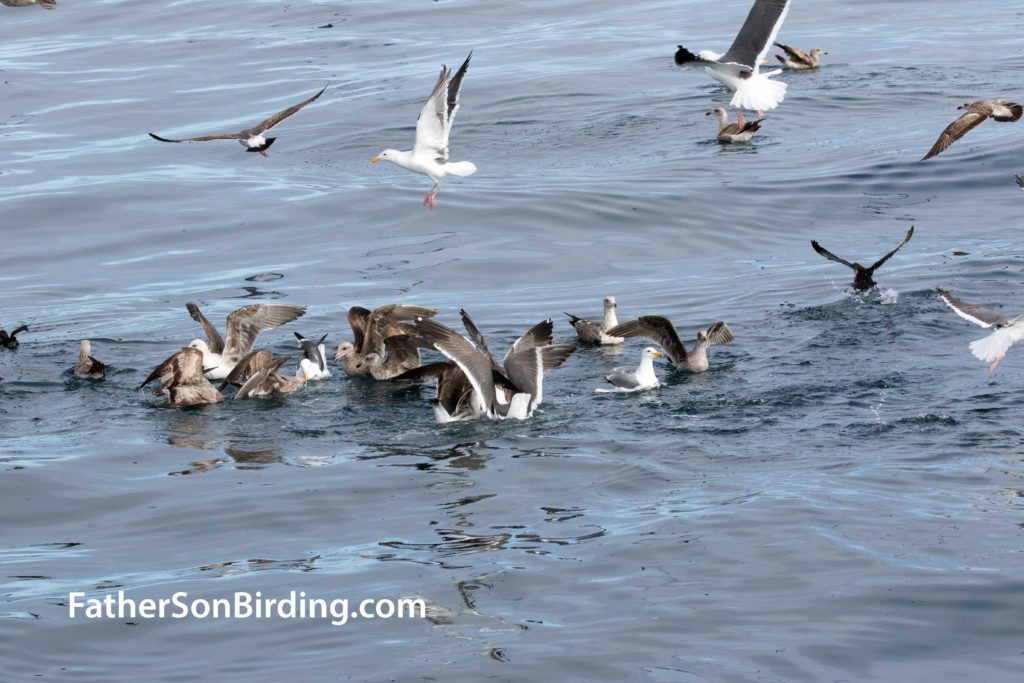
After enjoying this spectacle for half an hour, we turned south and angled farther out to sea. Braden said, “I have three priorities today: Scripps’s Murrelets, Pomarine Jaegers, and Brown Boobies.” My own priority was simpler: I really wanted to see a Brown Booby—or any booby for that matter. It wasn’t long before our target species began showing up.
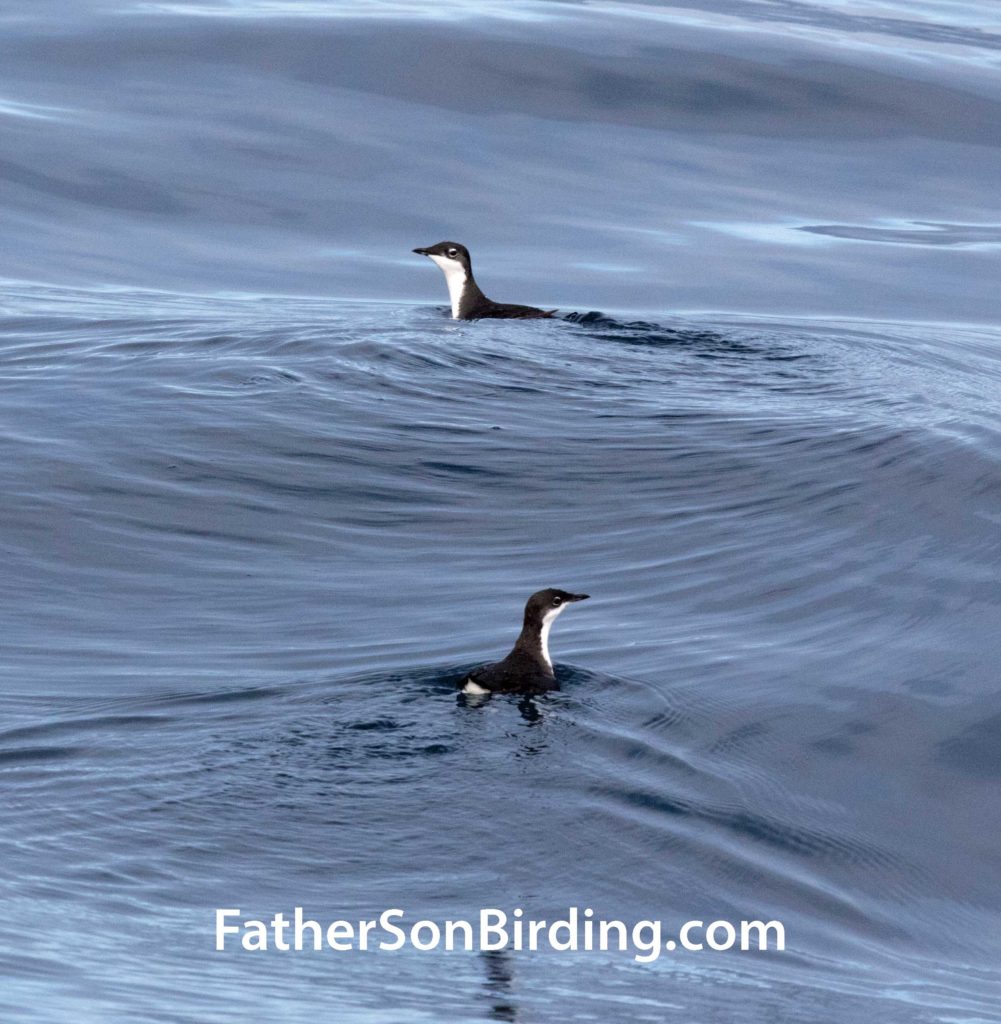
Undoubtedly the stars of the day were the Scripps’s Murrelets. These birds nest only in the Santa Barbara Channel Islands and on Mexico’s Coronado Islands, which loomed in the distance. The murrelets lay gigantic eggs compared to their body sizes—a full twenty percent of an adult’s weight. This advanced “in egg” development is no accident. Only two days after hatching, the chicks sneak away to the ocean to be raised by their parents almost entirely at sea. As we steamed south, we saw more and more of these adorable alcids, usually floating in pairs.
The boat “chummed” with popcorn, and that kept the gulls busy behind the boat, but also attracted brief visits from Braden’s second target, Pomarine Jaegers. Then Paul Lehman, our leader for the day, shouted over the PA, “Brown Booby at 12:00 o’clock, coming straight toward the boat!”
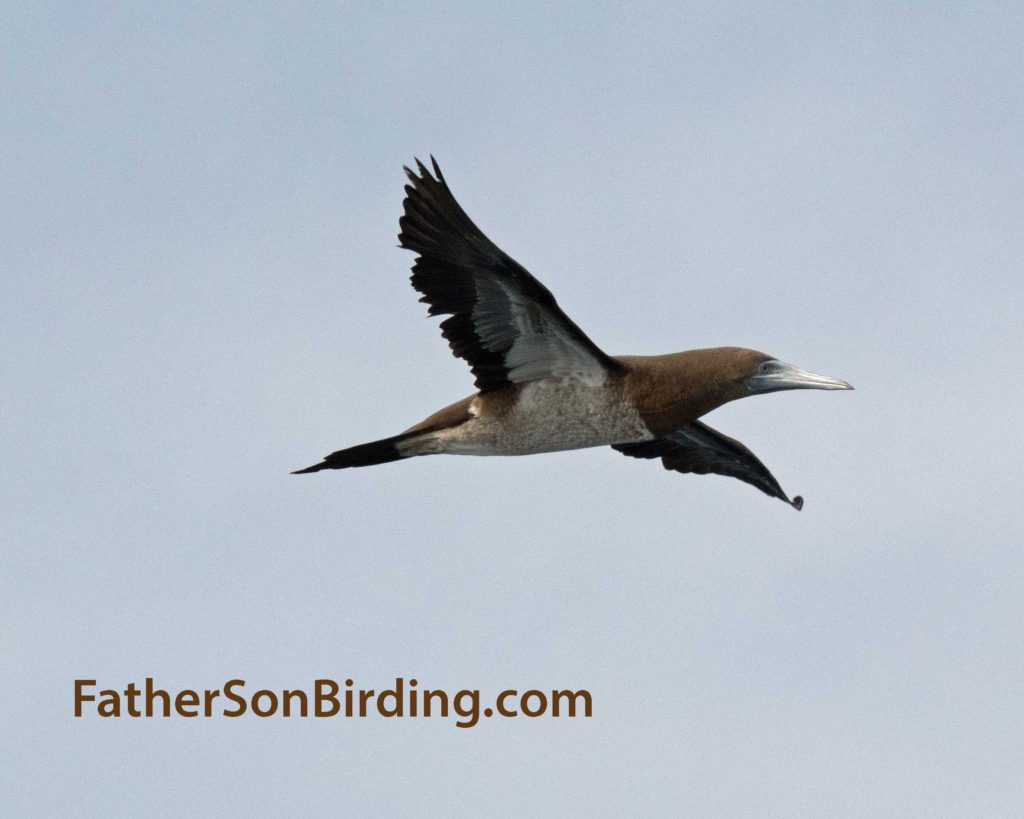
I hurried to the rail in time to see the elegant “gannet shape” of the booby as it sped fifty yards off the port side. The bird even did a quick circuit around the stern, giving us all good looks at its handsome chocolate-covered head and back before speeding away again.
“Yes!” I whispered to myself.
The day wasn’t without its challenges. The steady 3-foot swell took a toll on Braden, forcing him below deck for part of the journey. Still, he agreed that the birds were worth the queasiness and, as if to drive home the point, a pod of common dolphins escorted us part of the way back to the mainland.
Hasta la vista, San Diego—until the next time!
